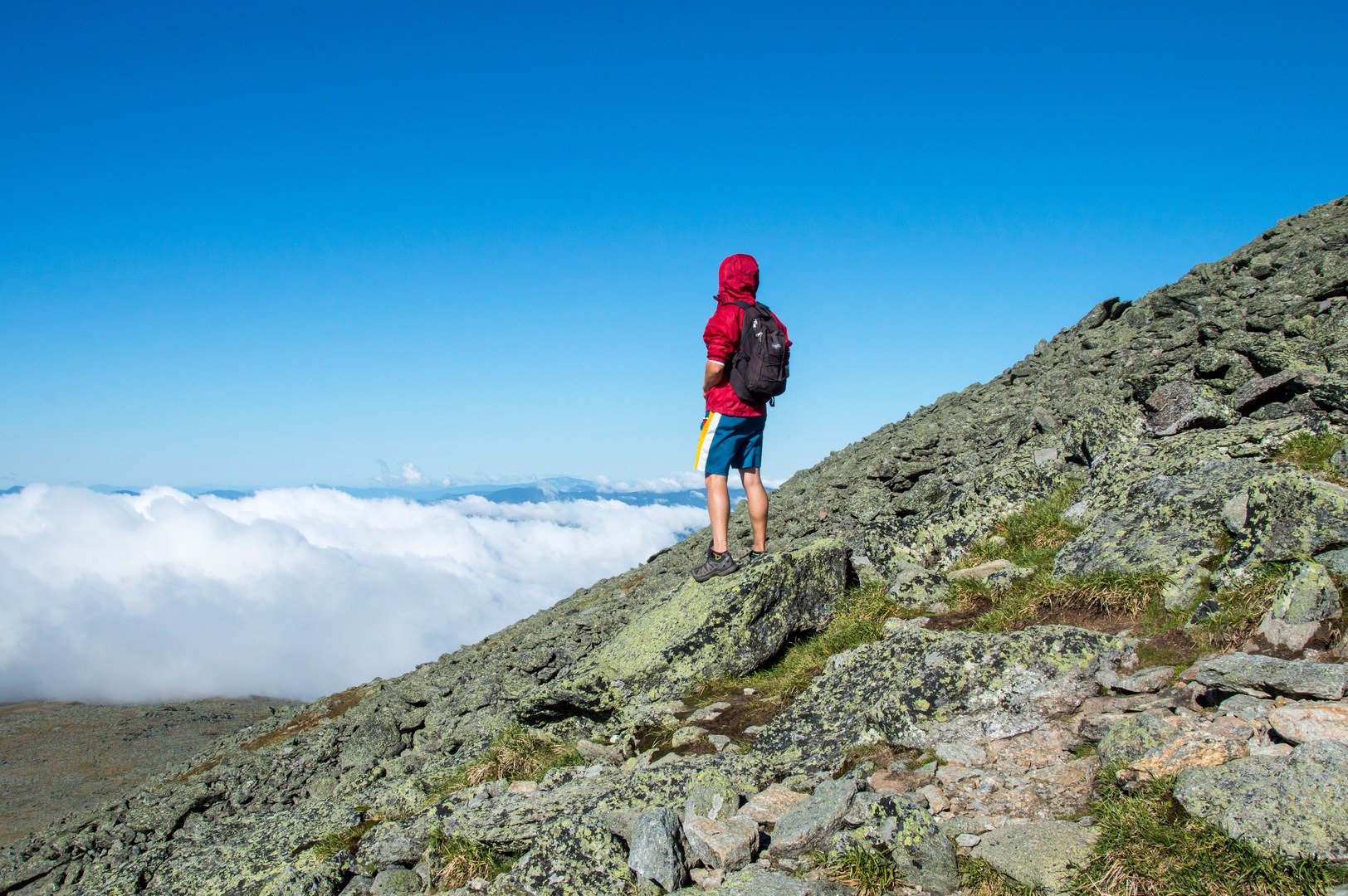You are here
As the tallest peak in its region of the continent, Mount Washington is the Northeast's most iconic summit. It is also infamous for its alpine weather, which is said to be as extreme and unpredictable as Everest. Exaggerated or not, this reputation does not discourage hundreds of thousands of people from reaching the top each year. Most ascend via the auto road or the cog railway, but plenty of hikers conquer the mountain via one of several established routes.
The most popular of these is Tuckerman Ravine Trail, which follows an obvious path of least resistance from Pinkham Notch Visitor Center along the Cutler River, then up through Tuckerman Ravine and over the talus slopes to the top.
This is commonly considered the easiest trail to the summit, hence the heavy traffic. Despite its popularity, don't underestimate this as a walk in the park. It is still very much an alpine route, with difficulty and safety completely dependent on weather and time of year.
In the summer and fall, when snowpack has mostly melted, the trail is usually a simple hike, but it is subject to high winds, low visibility, thunder showers, and even snow storms. In the winter and spring this is a mountaineering route that requires technical gear and snow safety skills. Nonetheless, it remains popular year round with hikers and climbers of all abilities.
Be sure to check conditions and forecasts to know what to expect, but come prepared for anything. Even if it's hot and calm weather at the trailhead, the summit may have high winds and bitter cold. Don't worry, because you can battle through the gusts to seek shelter in the summit visitor center and relax with snacks and a warm drink. But if the weather turns legitimately dangerous, it is crucial to use good judgment and know when to turn around.
The Route
The trail begins from Pinkham Notch Visitor Center in White Mountain National Forest. The first 2.3 miles are a pleasant and rather uninspiring walk in the woods. Follow the wide, rocky road continually upward among the trees. There is one photogenic waterfall on the Cutler River, and there are many scenic bridge crossings. The trail is not always well signed, but following the most obvious path will keep you on course.
Once you reach the Hermit Lakes shelter the trail becomes instantly spectacular. From here you can see into the huge bowl that is Tuckerman Ravine and eye the imposing headwall you are about to ascend. The remaining 1.8 miles are a true alpine experience, so take a pause in the shade before taking it on.
With decent visibility and snow-free conditions, the trail is fairly easy to follow. Look for orange or blue blazes on rocks and generally follow the path of least resistance. The looming headwall looks impassable until you get right beneath it, when a well-traveled switchback path becomes suddenly apparent. Follow this and enjoy sweeping views that become better and better as you climb higher.
After topping out the switchbacks, the summit is in sight, but the work is not over. Following wooden signs and painted blazes, make a beeline up the talus slopes. The trail ends at the top of the auto road. From here, take the staircase and walk past the visitor center to reach the 6,288-foot summit of Mount Washington.
Logistics + Planning
Current Weather: Powered by Dark Sky






























Comments
Sign In and share them.